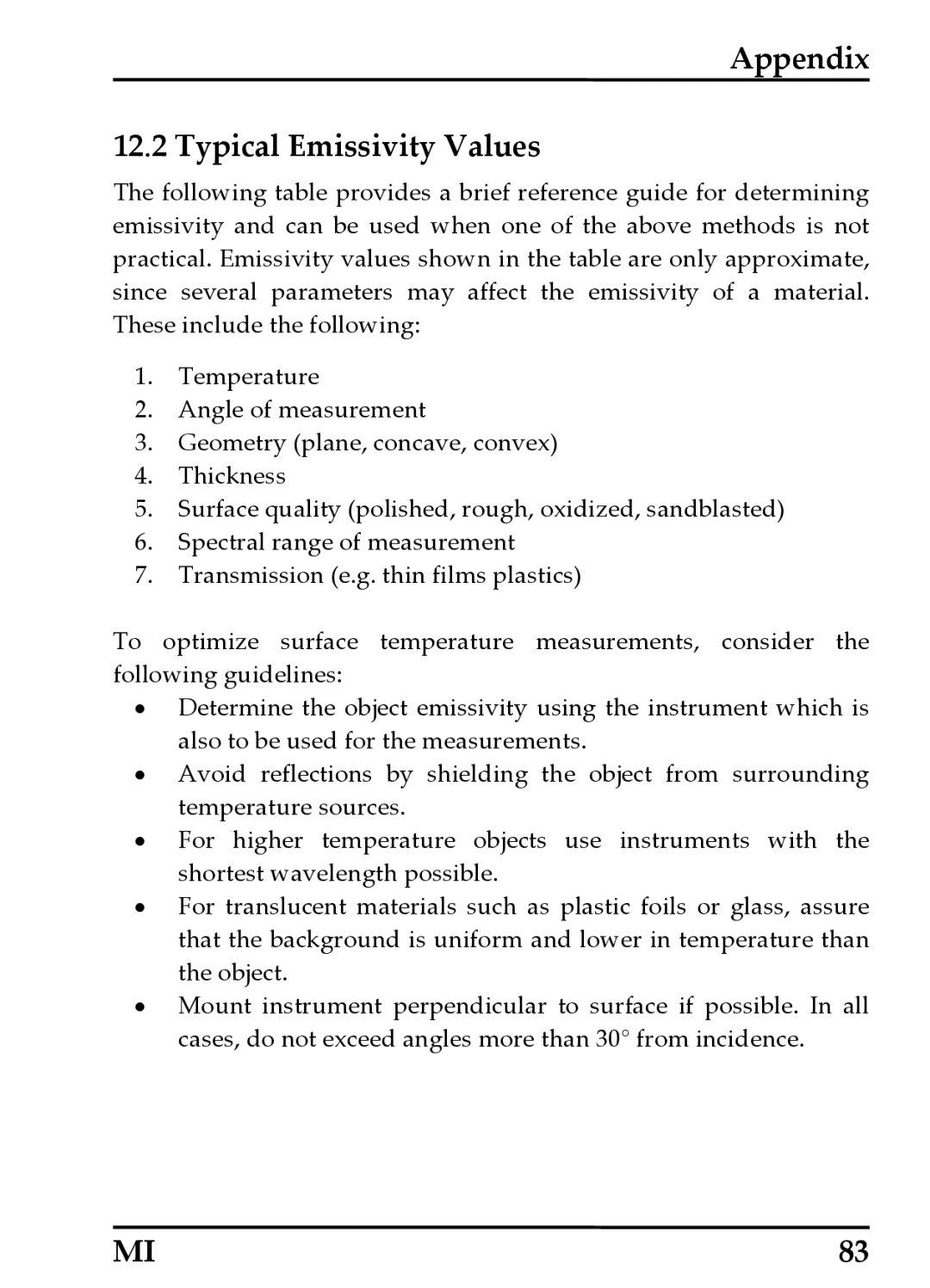
Appendix
12.2 Typical Emissivity Values
The following table provides a brief reference guide for determining emissivity and can be used when one of the above methods is not practical. Emissivity values shown in the table are only approximate, since several parameters may affect the emissivity of a material. These include the following:
1.Temperature
2.Angle of measurement
3.Geometry (plane, concave, convex)
4.Thickness
5.Surface quality (polished, rough, oxidized, sandblasted)
6.Spectral range of measurement
7.Transmission (e.g. thin films plastics)
To optimize surface temperature measurements, consider the following guidelines:
•Determine the object emissivity using the instrument which is also to be used for the measurements.
•Avoid reflections by shielding the object from surrounding temperature sources.
•For higher temperature objects use instruments with the shortest wavelength possible.
•For translucent materials such as plastic foils or glass, assure that the background is uniform and lower in temperature than the object.
•Mount instrument perpendicular to surface if possible. In all cases, do not exceed angles more than 30° from incidence.
MI | 83 |
